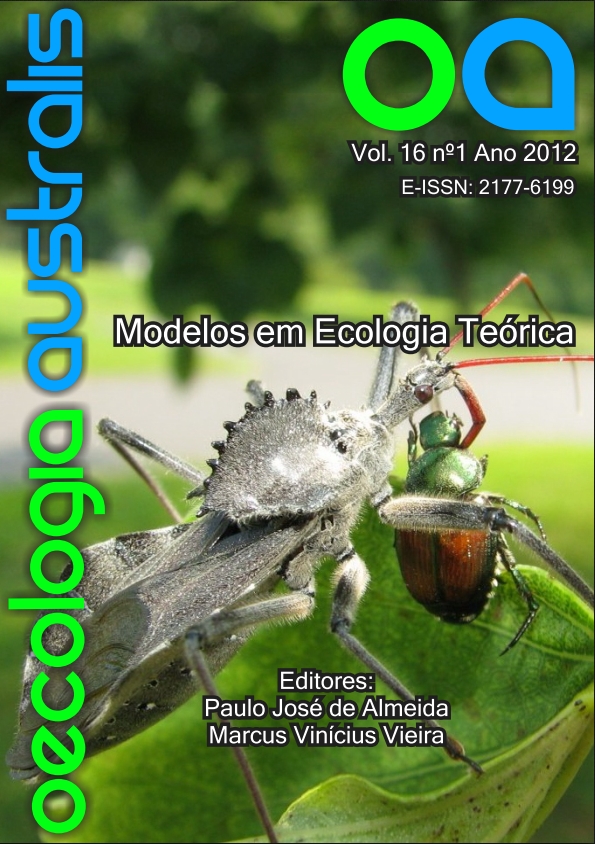EFEITOS DE PREFERÊNCIA ALIMENTAR E AUMENTO DE PRODUTIVIDADE NA DINÂMICA DE REDES TRÓFICAS
Keywords:
Food web, food preference, interaction strenght, primary productivity, stability.Abstract
Diversity and species coexistence can emerge as a consequence of several factors such as, predator's prey preference, prey carrying capacity, predators' mutual interference. In fact, interactions among three or more species are strongly influenced by direct and indirect interactions. Moreover, food webs usually display an intricate tangle of interactions containing multiple prey, which in turn gives rise to several food
items for predators besides allocthonous inputs. Within this context, predator's prey preference is commonly employed in mathematical models in order to investigate the interplay among food web structure, diversity, species coexistence and stability. A feature of these models is the categorization of the structure preference into two distinct forms: (1) fixed (“non-switching”); (2) variable (“switching”). The first one assumes that the predator has a fixed behavior with respect to the densities of its alternative prey, while the second is based on the relative densities of its alternative prey. This latter form is strictly related to the concept of predation risk -- prey are more susceptible to predation when their densities are more elevated than those of their counterparts. Given these frameworks, the effects of these two preference structures and the augmentation of primary productivity on the ultimate dynamics of some specific food webs will be reviewed in this work.


